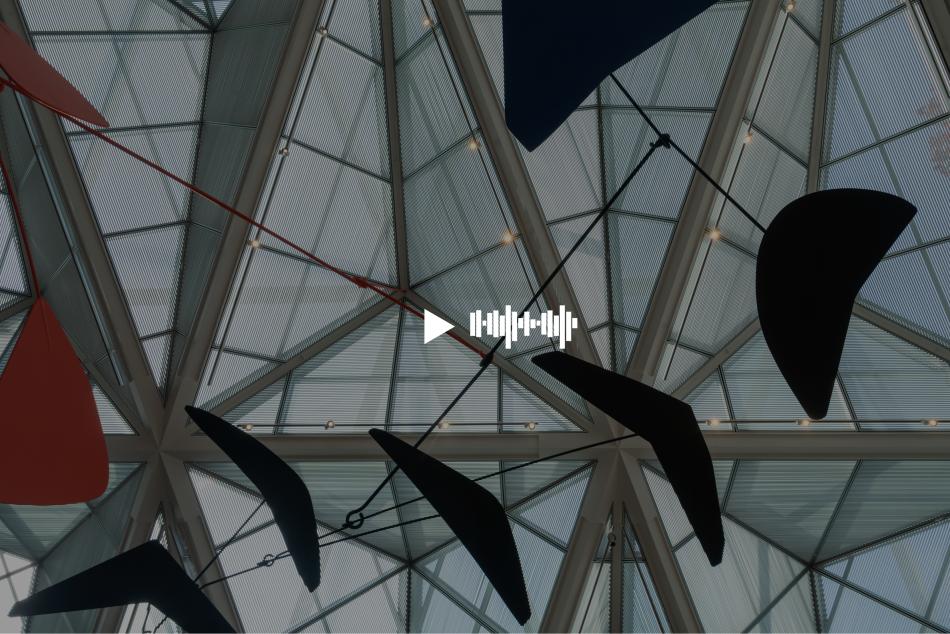NARRATOR:
This unsettling scene by Hieronymous Bosch presents us with a classic cautionary tale. Kaywin Feldman, Director of the National Gallery of Art.
KAYWIN FELDMAN:
In the story, we see that as death approaches the miser, in fact I sort of see death peering around the door as a kind of macabre room service, and he is reminding the miser that his time has come, and the little demons are offering the bags of money, and meanwhile the angel is looking up towards the crucifix and encouraging the miser to think of God and, to give up sinful ways.
NARRATOR:
The figure in green represents the miser earlier in life. He greedily counts gold coins while a nearby rat clutches a money-lending document.
Filmmaker Jem Cohen:
JEM COHEN:
What would be a flashback in the cinema can be simultaneous in a painting - a different moment from the same story placed elsewhere in the picture so the viewer cuts from one to the other. Here, the demon’s already inside the chest taking possession of that which can't be possessed, or not for long, by mortal humans - which is to say, riches. So this is a ‘you can't take it with you’ painting from a very different era that remains bitterly relevant today. Today those sacks might be full of stocks and bonds or Bitcoin, but greed is greed and hoarding is hoarding, so it's very timeless.
NARRATOR:
Bosch’s signature monsters are everywhere - they’re incredibly inventive.
JEM COHEN:
The demon under the curtain looks just like the Creature from the Black Lagoon - a testament to Bosch’s resonance in popular culture.
KAYWIN FELDMAN:
There’s an angel seated behind the miser and has one hand in fact on the miser’s shoulder, and the angel is pointing up towards the window where there’s a crucifix and light descending, and it’s a moment for the miser to reconsider and mend his ways.
NARRATOR:
There is much we still don’t know about Bosch’s painting. It may have been part of an altarpiece that presented a fuller narrative of the struggle between good and evil - we are left with many unanswered questions. Infra-red imaging revealed that Bosch too was unsure how this story would end.
KAYWIN FELDMAN:
Originally, Bosch painted the miser grasping the bag of coins that the little monster is offering him, and in his other hand he had some silver chalices, and you can see in this final version that Bosch changed his mind. So, we’re not really quite sure what direction the miser is going to go.
What’s particularly timeless I think about Bosch is that he holds a mirror up and shows humanity what it looks like. And to his credit, that mirror is just as relevant, funny and piercing today as it was 500 years ago when he painted the picture.



